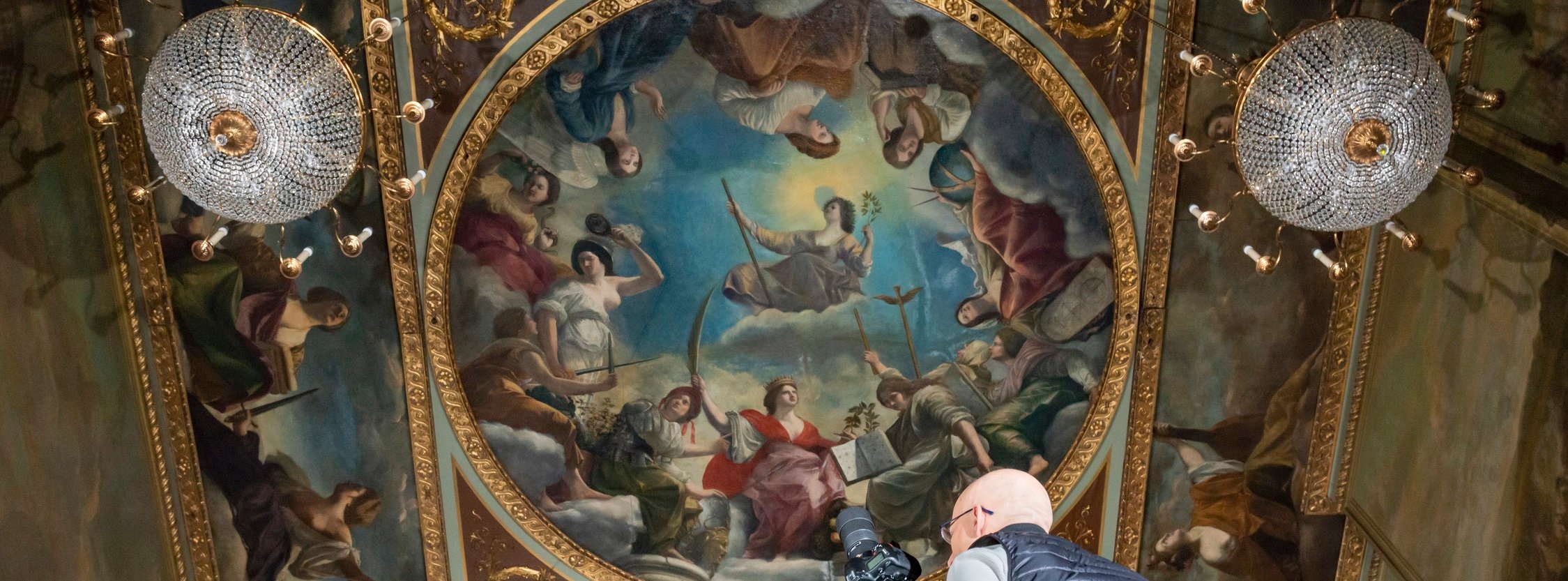
The Marlborough House ceiling by Orazio and Artemisia Gentileschi
Learn about the history of this magnificent ceiling
The Muses: Euterpe and Polyhymnia
c 1635-8RCIN 408472
This is one of four rectangular panels depicting two of the nine Muses, which is part of the ceiling decoration of An Allegory of Peace and the Arts. Painted by Orazio Gentileschi, for Queen Henrietta Maria, c.1636-8, the ceiling decorated the Great Hall at the Queen's House Greenwich until about 1711, when Queen Anne granted it to her favourite, Sarah, Duchess of Marlborough, and it was transferred to her new residence Marlborough House on Pall Mall, now the Commonwealth Secretariat.
The ceiling celebrates the benign rule of Charles I when peace and the liberal arts could flourish. The four panels of the Nine Muses, together with four panels with Personifications of the Arts frame the central tondo (RCIN 408464). Each Muse had a sphere of influence over learning and the arts. With the exception of Polyhymnia and Terpsichore, Gentileschi has followed Cesare Ripa’s Iconologia, the popular hand book for allegorical personifications.
Both are seated on clouds, here on the left is Euterpe, Muse of lyric poetry and music, wearing a gold robe and holding a pipe in each hand. To the right is possibly Polyhymnia, Muse of heroic hymns, in red and faded blue, looks up and holds a tablet in her left hand. She has also been identified as Calliope, Muse of epic poetry, whose attributes are a tablet and stylus.
It is now thought that Artemisia, Orazio’s daughter, may have assisted her father with his last commission. She probably arrived in London early in 1638, and if the ceiling was installed at the end of that year, she could have had time to paint some of muses and personifications of the arts in the outer canvases. The figures of Euterpe and Polyhymnia have the dramatic chiaroscuro and more powerful physiques of Artemisia’s work compared to the refined and artificial style of her father.
The image of the complete ceiling is an attempt at arranging photographic reproductions of the canvases in their original location at The Queen's House during the 1980s.




